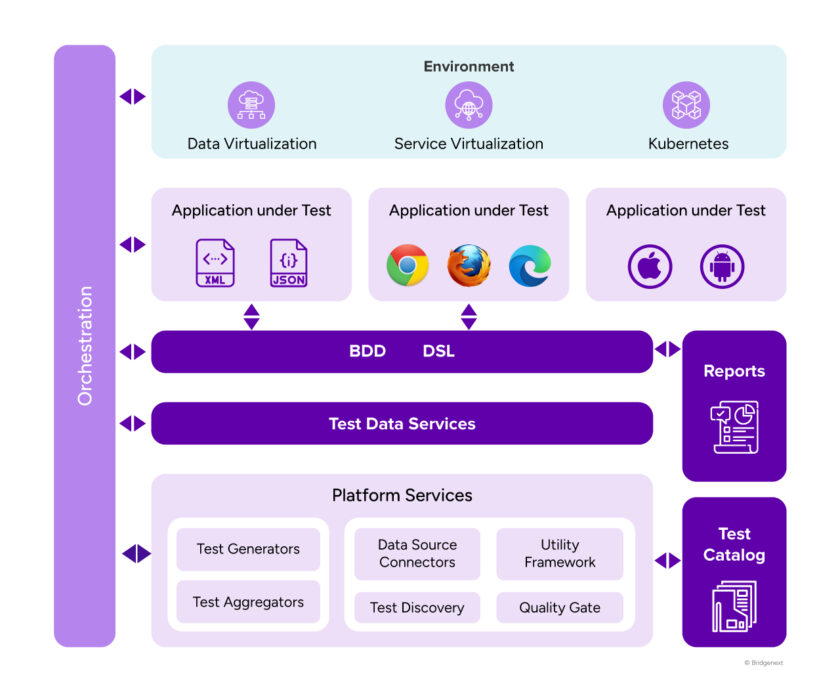Challenge / Goal
With a complex application landscape comprised of multiple legacy systems and newer applications built on the latest technology stacks, a leading shipping, transportation and logistics provider had difficulty maintaining quality control and managing production outages caused by software glitches.
Mission-critical systems impacted by poor quality production releases and testing issues created significant impacts. A detailed study of the client’s existing ecosystem and testing architecture uncovered critical challenges around technology, process and culture that needed to be addressed:
- The lack of a robust testing environment and huge dependencies between diverse applications and heterogenous infrastructure made application testing initiatives even more challenging
- Different teams working across multiple business applications without early testing blocked production releases, delaying critical features
- Lack of appropriate platform engineering practices to support testability across the organization
- Inadequate test data management across business applications
- Absence of test result analytics and immediate feedback
- Lack of test code reusability and test framework scalability
- Missing service level contracts causing problems in tracing service dependencies
- No visibility into upstream and downstream failures
- Late provisioning of testing efforts in the SDLC cycle
- Insufficient testing and missing test quality gates
Solution
The client engaged Bridgenext (formerly Emtec Digital) to evaluate their enterprise platform landscape and define an optimized platform engineering strategy. Our team began the engagement by conducting a workshop on continuous testing to educate the client’s team on the value of shift left testing (bringing testing closer to the SDLC) with an added emphasis on application security and performance throughout the testing journey.
The next phase was a three-month POC to understand the client’s AS-IS automation framework and build and release ecosystem. The main objective was to provide a recommended TO-BE platform engineering strategy that would leverage their existing skills and investments, comply with automation best practices and provide a scalable enterprise platform for superior testing and developer experience.
We carried out a technology landscape assessment and presented an architecture roadmap for the enterprise test orchestration platform based on open-source tools that factored in the client’s internal processes, current testing dynamics and challenges faced by developers. We recommended a Shift Left test automation approach with a Behavior Driven Development (BDD) style framework that allowed them to write automation code in simple language. The idea was to empower the client’s agile team to explore, develop, test and safely move high-quality code to production without delays or errors.
The proposed platform segregates BDD-based test authoring responsibilities from test data management and facilitates service and data virtualization to improve testability for immutable infrastructure. The platform enables tests authored by various teams to be discovered and reused. It further enforces appropriate quality checks in the release orchestration process to sustain the quality of services as they progress through the environment chain.

Tech Stack
- Java
- Karate
- Gatling
- Report Portal
- Backstage
- Docker
- WireMock
- Delphix
- XebiaLabs
- Browserstack
- Maven
- Kubernetes
Results
Our platform engineering solution helped the client improve quality of releases and achieve a significant reduction in cost through a highly efficient QA process.
- Enhanced platform scalability
- Faster release cycles with improved quality
- Reduced dependency on cross-functional teams
- Accelerated development process
- Reduced time to execute continuous tests as part of pipelines
- Improved testing efficiency and test coverage
